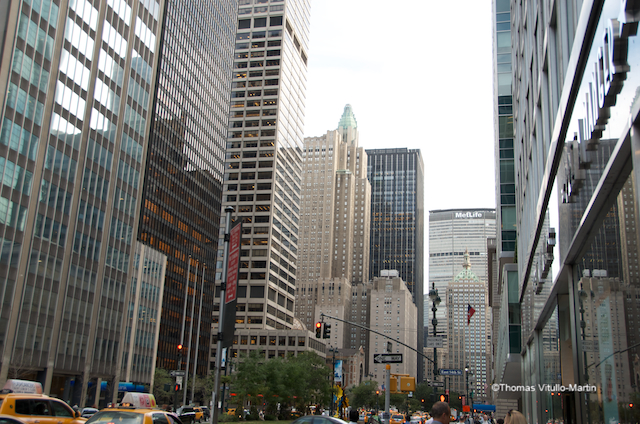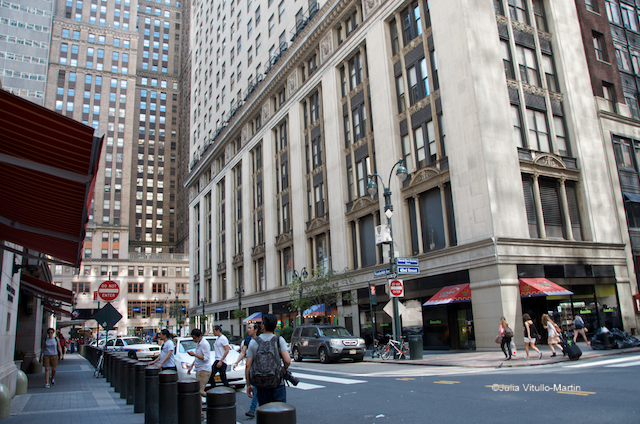 Posted Sep 30, 2013, 5:32 PM
Posted Sep 30, 2013, 5:32 PM
|
 |
New Yorker for life
|
|
Join Date: Jul 2001
Location: Borough of Jersey
Posts: 51,900
|
|
No surprise here, now its on to the Council for final approval, where there could be more changes.
http://www.dnainfo.com/new-york/2013...ing-commission
East Midtown Rezoning Plan Approved by City Planning Commission

By Alan Neuhauser
September 30, 2013
Quote:
The proposal to overhaul East Midtown's aging business district to allow for new, larger skyscrapers moved one step closer to becoming reality Monday.
The City Planning Commission overwhelmingly approved the Bloomberg administration's application to rezone 73 blocks around Grand Central Terminal, voting 11-0 with one recusal and one abstention.
The measure that would allow buildings with greater density, higher ceilings and wider floors now heads to the City Council, which has until the end of November to vote on it.
"If we are to continue to have a world-class district with top-tier, state-of-the-art office space, we need to change the zoning — but carefully," Commission chairwoman Amanda Burden said. "This proposal...will allow East Midtown to usher in the next generation of state-of-the-art and competitive office space, and to ensure that the district maintains its vital role in support of the city’s economy."
|
http://untappedcities.com/2013/08/06...han-you-think/
NYC’s East Midtown Rezoning Plan: Why It’s Better than You Think

by julia vitullo-martin
August 13, 2013
Quote:
Many of the sleek Modernist buildings in which the advertising “Mad Men” toiled decades ago are now shabby and tired, their once glamorous tenants dispersed to neighborhoods to the west and south. The advertising industry has been gone from Madison Avenue for so long—its exodus started in the early 1970s—that only people of a certain age automatically understood the play on words behind the title of the smash hit “Mad Men.”
Indeed, much of East Midtown is aging badly. Of its 400 buildings, some 300 are more than 50 years old. Even those with handsome limestone exteriors that look good from the outside tend to have overly small interior spaces, low ceilings, and out-of-date mechanicals. The now mostly dreary post-war Modernist buildings have the same problems—but without the handsome exteriors.
Yet Midtown is not only the largest commercial district in the country, it is New York City’s historic core. As urban economist John Alschuler, the New York-based chairman of HR&A Advisors, says, “No city is better than its primary location. You can’t let your core decline and expect that other neighborhoods will make up for it.”
If there’s one thing that nearly all of today’s urbanists agree it’s that transit-oriented-development is good: cities should encourage development at their transit hubs. Yet the Bloomberg administration’s proposal to do just that by giving extra density to developers in East Midtown has been met by explosive criticism by those who generally position themselves as TOD advocates. The New York Times, for example, assailed the rezoning for “adding a small army of new skyscrapers around the elegant Grand Central Station.”
That’s not actually what the rezoning would do—there would be no small army, just a handful of towers—but isn’t the very essence of Grand Central Terminal to be a transit hub? And shouldn’t we want far more development at that hub than New York had 100 years ago when it was built?
.....But what about the current urban fabric, the many likable, good-looking, but architecturally unrenowned pre-war buildings that now stand on so many blocks? Most will be untouched by the new zoning, though some of the large ones, including those long slated for redevelopment, will qualify. S. L. Green, for example, is planning a tower to be designed by Kohn Pedersen Fox at the corner of Vanderbilt and 42nd Street. Personally, I love the current building (though the commenters on Curbed call it mediocre and boring), but I recognize that no top corporate tenant—which is what GCT should be attracting—would dream of moving into such an obsolete building, however pretty. If any corner should be primed for TOD, it’s the one opposite Grand Central. And, under Bloomberg’s DIB, Green will pay a minimum of $32 million into the fund, and some $150 million should it decide to opt for maximum density.
|

__________________
NEW YORK is Back!
“Office buildings are our factories – whether for tech, creative or traditional industries we must continue to grow our modern factories to create new jobs,” said United States Senator Chuck Schumer.
|